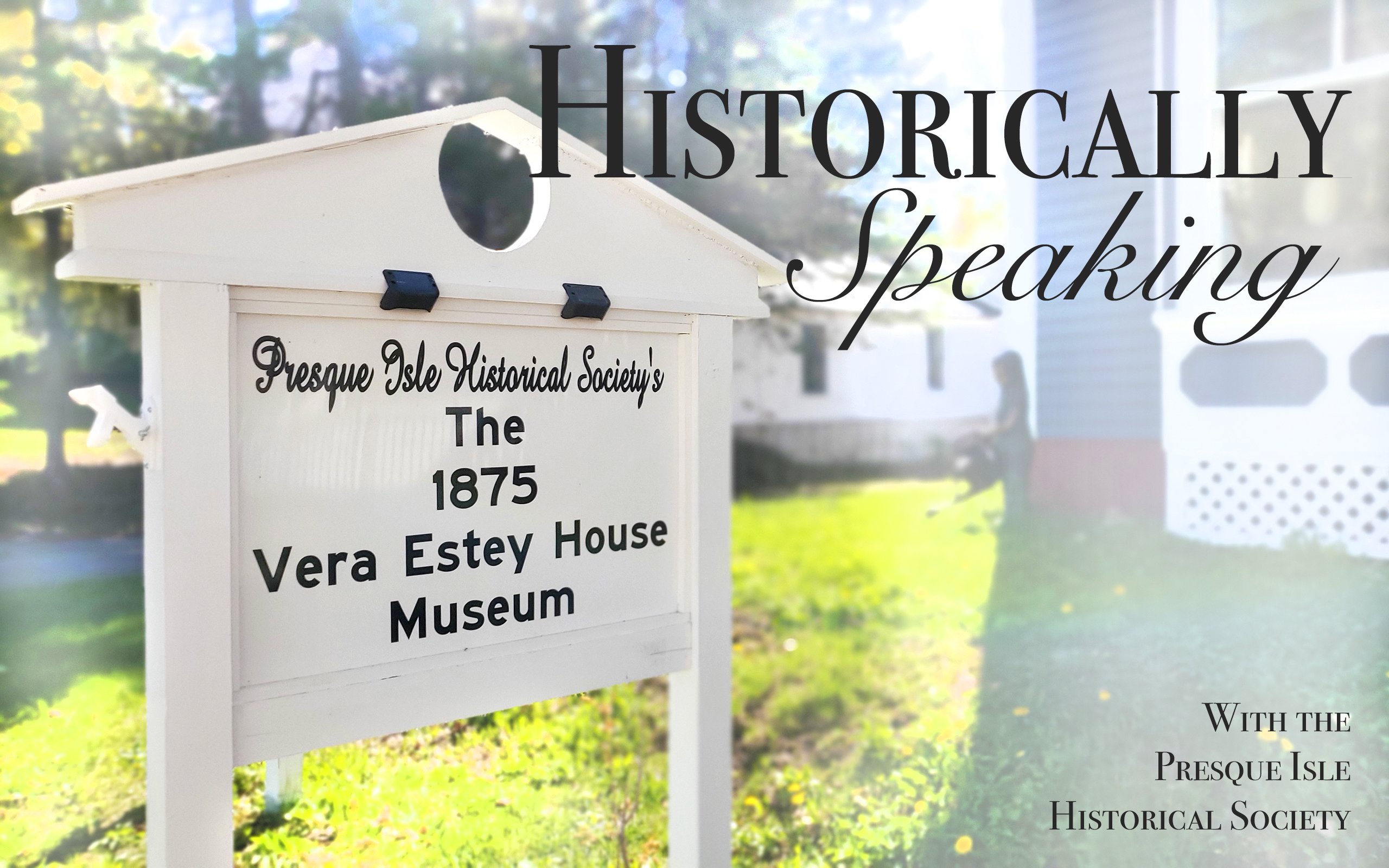November is Historic Bridge Awareness Month. Today with modern transportation, we often take the very existence of bridges for granted. Try to imagine what it must have been like for early settlers in the Presque Isle area alone where we were bounded on the west of the village by the stream and on the north and east by the Aroostook River.
Farmers would harvest their crops, carry it through the heavily wooded countryside — not paved or even actual cutout roads — to the waterway and then have to row a boat across to get to market. Not an easy life, for sure.
Right here in Presque Isle, there is a great deal of bridge history. The first bridge to span the Aroostook River, a 400-foot covered bridge, was built in 1858. The construction costs of $6,000 were covered 50 percent by the state and 50 percent by public subscription (taxes). In May 1885, that bridge washed away in a flood and was replaced later that same year.
In 1902, the iron bridge on Park Street was built across the Presque Isle Stream to replace the poorly constructed wooden bridge.
The first concrete bridge built over the Presque Isle Stream on State Street was constructed in 1907 to replace the wooden bridge built by Dennis Fairbanks, founder of our community. Seed money for the concrete bridge was given by Arthur Gould.
According to the National Bridge Inventory, there are eight bridges in Presque Isle today: US Route 1 across the Aroostook River, Park Street, State Street, Chapman Street, Route 10, Egypt Road, Maysville Street Extension, and Route 163 Bypass.
Today, Maine still boasts eight historic covered bridges originally built in the 1800s and early 1900s. These are in bridges in Andover, Corinth, Errol, Fryeburg, Gorham, Guilford, Newry and Parsonsfield. The only one in Aroostook County, in Littleton, was the Watson Settlement Bridge on the Carson Road on the way to New Brunswick.
The bridge was destroyed by fire earlier this year. It carried the name of a homestead found in nearby New Brunswick and was the northernmost existing covered bridge, the youngest having been built in 1911, and had the longest span (170 feet). The bridge was closed to traffic in 1984.
The Lovejoy Bridge in Andover is the shortest of Maine’s existing covered bridges measuring only 70 feet. It was built in 1868.
The Robyville Bridge in Corinth was built in 1876 and has a 73 foot span.
In Errol, covered bridge enthusiasts can find the Bennet Bridge built in 1901 with a span of 93 feet. It was closed to traffic in 1985.
The 109 foot span of the Hemlock Bridge can be found in Fryeburg. It was built in 1857.
Babb’s Bridge in Gorham is technically the oldest having been originally in 1840 with a 79 foot span. The original bridge was actually destroyed by fire in 1973 and a replica now stands in its place.
The Lowes Bridge in Guilford was built in 1857 with a span of 120 feet.
The Artist’s Covered Bridge also known as the Sunday River Bridge can be found in Newry. It was built in 1872 with an 87 foot span. The bridge was closed to traffic in 1958.
The final of Maine’s existing covered bridges is the Porter-Parsonsfield Bridge in Parsonsfield. This bridge, closed to traffic in 1960, was originally built in 1859 and has a span of 152 feet.
So, as we celebrate National Historic Bridge Awareness Month, perhaps spare a moment to ponder how fortunate we are to have these long-lasting structures that make our life so easy as we move from area to area.
Kimberly R. Smith is the secretary/treasurer of the Presque Isle Historical Society.





